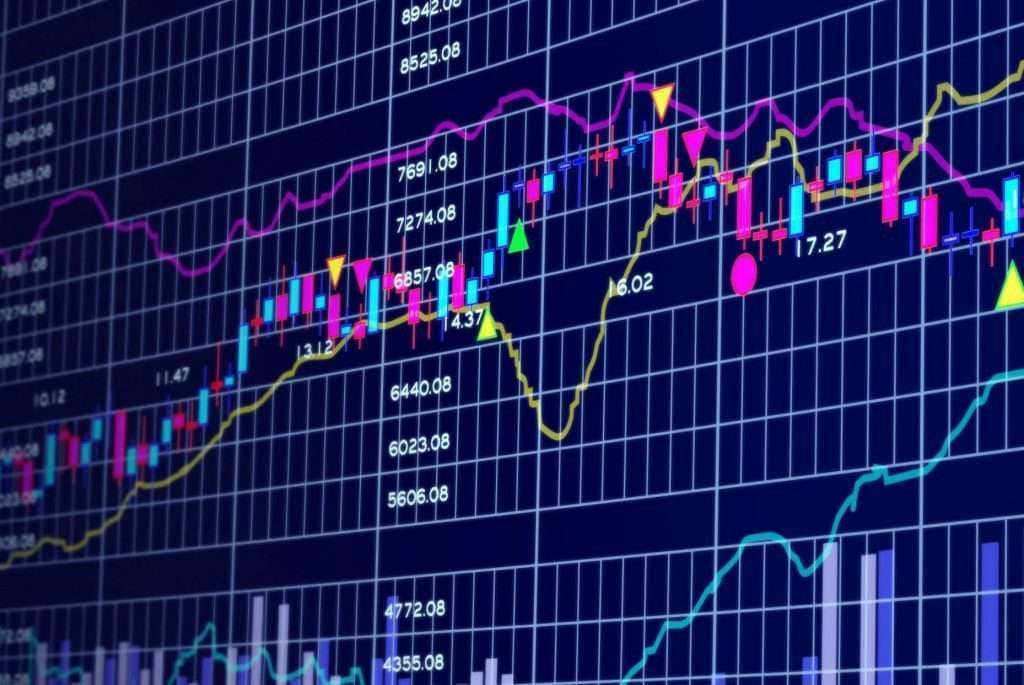Content
David Keohane writes that measuring liquidity is by necessity slippery — pick your preferred measure of liquidity (bid-ask, price impact, decline in net-dealer inventories) and we are pretty sure we can point you to a problem with it. But the chart below, on growing market size versus declining turnover, is tantalizing. But, there are compelling reasons to suspect that level of liquidity is affecting the slope of the yield curve, and lessening its predictive power. The same factors that are contributing to liquidity–low uncertainty about inflation and output–are also driving down term premiums and, hence, long-term Treasury yields. Thus, to the extent that low long-term Treasury yields and the negative slope of the yield curve reflects a lower term premium, rather than a lower expected short rate, it is less likely to signal future economic weakness.
Table 3 provides the results of panel data regression with random effects in Models (1–3). According to Bell and Jones , the random-effects model is more appropriate and provides more explanatory power than the fixed one. As advocated by past studies of Al-Awadhi et al. and Anh and Gan , a panel data regression model with random effects is developed in this paper. Is a dummy variable whose value equals 1 if market capitalization of a stock is in large 50th percentile; and zero otherwise.
What is meant by market liquidity?
The study shows that the increasing number of confirmed cases and deaths positively impact the market liquidity, although there exist differences in liquidity dynamics between small-caps and large-caps. Nevertheless, the results on industry-level and country-level conclude a negative and significant relation between the COVID-19 epidemic and the stock market liquidity. Some market participants tell me that the very low bond default rates seen recently, realized and expected, are themselves a reflection of liquidity.
- These liquid stocks are usually identifiable by their daily volume, which can be in the millions, or even hundreds of millions, of shares.
- In Models and , there exists a significantly positive nexus between the two liquidity ratios, AMIHUD and CPQS, and the growth rate of daily COVID-19 infections in Vietnam.
- As part of this process, the Fed is allowing bonds to run off at maturity while decelerating its bond purchases.
- But reforms enacted following the GFC require banks to set aside minimum amounts of capital against assets—including US Treasuries.
- In its latest monetary report to Congress, the Federal Reserve writes that despite these increased market discussions, a variety of metrics of liquidity in the nominal Treasury market do not indicate notable deteriorations.
- Likewise, in October 2014, US Treasury yields plummeted by almost 40 basis points in minutes.
- Table 6 represents the results of panel data regression with random effects from Models and .
The information on this web site is not targeted at the general public of any particular country. It is not intended for distribution to residents in any country where such distribution or use would contravene any local law or regulatory requirement. The information and opinions in this report are for general information use only and are not intended as an offer or solicitation with respect to the purchase or sale of any currency or CFD contract. All opinions and information contained in this report are subject to change without notice. This report has been prepared without regard to the specific investment objectives, financial situation and needs of any particular recipient. Any references to historical price movements or levels is informational based on our analysis and we do not represent or warranty that any such movements or levels are likely to reoccur in the future.
What’s Behind the Drop in Treasury Market Liquidity?
The authors have conducted a panel data regression analysis using data from 50 banking, insurance and finance companies listed in Vietnam’s two biggest stock exchanges within the period from January 30th, 2020 to May 15th, 2021. How to Invest in ETFs Exchange-traded funds let an investor buy lots of stocks and bonds at once. Liquidity risk is the risk that investors won’t find a market for their securities, which may prevent them from buying or selling when they want. This is sometimes the case with complicated investment products and products that charge a penalty for early withdrawal or liquidation such as a certificate of deposit . For CLO structures to be effective, they invariably must include a more risky equity tranche.
We show that there is a premium for IV in value-weighted portfolios, but this premium is less strong after correcting returns for microstructure bias. We further show that this premium is driven by liquidity in the prior month after correcting returns for microstructure noise. The pricing results from equally-weighted portfolios indicate that IV does not predict returns either before or after controlling for liquidity costs. These findings are robust after controlling for common risk factors as well as analysing double-sorted portfolios based on IV and liquidity.
Conversely, stock liquidity discourages internal monitoring by reducing the costs of ‘exit’ of unhappy stockholders. The U.S. has exceptionally many actively-traded firms with widely-diffused stockholding because public policy has favored stock market liquidity over active investing. And, the benefits of stock market liquidity must be weighed against the costs of impaired corporate governance. While we do not find clear indications of a widespread worsening of bond market liquidity, our analysis faces several limitations, including important limits to available data.
A simple approximation of intraday spreads using daily data
Securities that are traded over-the-counter such as certain complex derivatives are often quite illiquid. For individuals, a home, a timeshare, or a car are all somewhat illiquid in that it may take how to find liquidity provider several weeks to months to find a buyer, and several more weeks to finalize the transaction and receive payment. Moreover, broker fees tend to be quite large (e.g., 5-7% on average for a realtor).

You can measure the liquidity of specific futures products by looking at daily trading volumes and open interest, and the number of open long and short positions. In Models and , there exists a significantly positive nexus between the two liquidity ratios, AMIHUD and CPQS, and the growth rate of daily COVID-19 infections in Vietnam. These findings confirm that the worsening severity of the COVID-19 hinders the depth of Vietnam’s stock market and soars the transaction cost incurred. However, the daily increase in COVID-19 deaths in Vietnam does not appear to have a significant impact on market tightness and depth. The impact of the worldwide COVID-19 pandemic on the stock market seemingly remains inconclusive in the least near future. Such inconclusiveness creates ground for an in-depth investigation of the stock market’s liquidity and profitability in response to the pandemic outbreak and the disease control policies imposed by the Government.
Economics
Since then, the local transmission began to develop with a cluster of cases detected in several Northern provinces. On February 12th, 2020, the local authorities imposed quarantine and self-isolation restrictions on the whole Son Loi Commune, Binh Xuyen District, Vinh Phuc Province to limit the spread of the disease. Get stock recommendations, portfolio guidance, and more from The Motley Fool’s premium services. How to Invest in Index Funds Index funds track a particular index and can be a good way to invest. Fleming, M , “Advent of trade reporting for US Treasury securities”, Liberty Street Economics, 18 January.
As you can see in the list above, cash is, by default, the most liquid asset since it doesn’t need to be sold or converted (it’s already cash!). Stocks and bonds can typically be converted to cash in about 1-2 days, depending on the size of the investment. Finally, slower-to-sell investments such as real estate, art, and private businesses may take much longer to convert to cash . Oil is the most highly traded commodity, which typically means it’s a liquid market – although issues such as storage shortages have been known to lead to liquidity risk when no one is willing to buy the commodity. The market liquidity of stock depends on whether it is listed on an exchange and the level of buyer interest.
Subordination of American capital
Since early 2020, the COVID-19 pandemic has become a “hot topic” evoking great interest across boundaries. The illness onset was on December 31st, 2019 with dozens of mysterious pneumonia cases emerged in Wuhan City, Hubei Province, China (Sohrabi et al., 2020). In less than 3 months, the outbreak has spanned rapidly to every corner of the globe.

The next step on the pyramid are the futures and options contracts that trade on exchanges. These contracts allow a wide and diverse group of market players to have an interest, or “position,” in the price movements of commodities. The next level of the pyramid consists of ETF and ETN products designed to mimic price variations in the assets they purport to represent. According to Van Hoof , the COVID-19 pandemic is an unprecedented event that forces one-third of the world’s population to these experiences. As of September 7th, 2020, Vietnam witnessed some positive signals in containing the epidemic.
The decline in market liquidity
To qualify as a large-cap stock, a company typically needs to have a capitalisation of $10 billion or more. They are also normally blue-chip stocks, which have established earnings and revenue. Conventional theory suggests that companies with larger market caps are more likely to have stable prices and a higher volume of traders, which means that the shares can be converted to cash relatively quickly. Despite experiencing high levels of liquidity, the forex market does not exhibit stable pricing.
In an illiquid market, buyers and sellers cannot agree on the price of the market, which usually leads to wider bid-ask spreads and higher execution costs. Although these are three of the most liquid financial markets, cash is actually the most liquid asset because it can be used to buy just about anything. Therefore, the liquidity of most other assets is judged by the speed and ease at which they can be converted into cash. Banks can generally maintain as much liquidity as desired because bank deposits are insured by governments in most developed countries. A lack of liquidity can be remedied by raising deposit rates and effectively marketing deposit products.
My expectation wouldn't be that SOFR rates drop dramatically, but could they rise dramatically if collateral (US Treasuries) became scarce?
Does this not imply that entities are hedging for a pending SOFR rate increase due to market liquidity concerns?— TheQuestioningMind (@TQuestMind) February 2, 2023
Most banks are subject to legally mandated requirements intended to help avoid a liquidity crisis. Extensive past studies have established the potential impact https://xcritical.com/ of pandemics on the stock market. For instance, Chen et al. investigate the effect of the SARS outbreak on the performance of Taiwan’s stock market.
The development of corporate financial markets in Britain and the United States, 1600–1914: Overcoming asymmetric information
In the example above, the rare book collector’s assets are relatively illiquid and would probably not be worth their full value of $1,000 in a pinch. In investment terms, assessing accounting liquidity means comparing liquid assets to current liabilities, or financial obligations that come due within one year. In the stock market, these include average daily volume, top of book size or market depth, which is the total number of shares or contracts below the bid and above the offer.
But thanks to the rise of derivative products – including CFDs, futures, ETFs and ETNS – it is easier to trade commodities than ever before. As we derive our prices from those in the underlying market, a lower bid-offer spread here will translate into lower spreads offered on the platform. Financial analysts look at a firm’s ability to use liquid assets to cover its short-term obligations. For example, if a person wants a $1,000 refrigerator, cash is the asset that can most easily be used to obtain it.
These effects are related to the level of direct information leakage in the market. The predicted patterns of trading and market volatility help reconcile several debates. As noted, ‘liquidity’ in the sense of “trading liquidity” reflects the ability to transact quickly without exerting a material effect on prices. Liquidity is optimally achieved when myriad buyers and sellers are ready and willing to trade.

